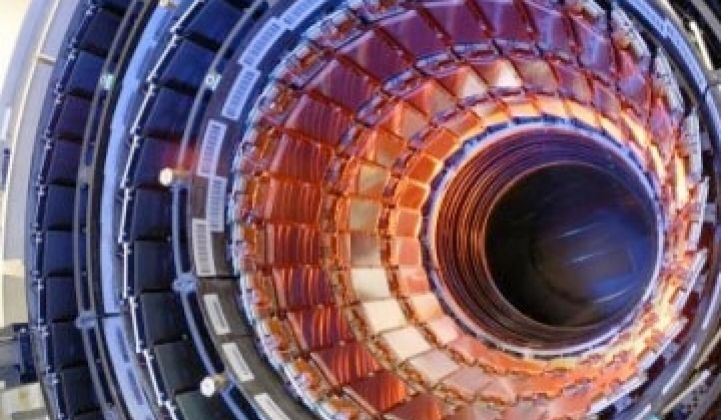Thorium might be the answer, according to Alf Bjorseth.
Nuclear startup Thor Energy will conduct a series of tests with Swedish utility Vattenfall to study the feasibility of thorium reactors, according to Bjorseth, the head of the Scatec, a clean technology incubator based in Norway.
"We need another source that can give us baseline power. Hydroelectric is basically exploited, so it is only nuclear that is left," he said.
Norway doesn't have commercial nuclear reactors, but it has a research reactor where the Vattenfall tests will take place. The country also has the third largest reserves of thorium in the world, he claimed. Some argue on that last point, but most agree the deposits are large.
For those of you in the solar industry, the name might look familiar. Bjorseth founded Renewable Energy Corporation (REC), the large solar manufacturer that does everything from silicon and wafers to power plants. REC pulled in approximately $1.5 billion revenue last year. In 2005, Bjorseth retired from REC to concentrate on Scatec. (He will speak on the future of clean energy at Nordic Green II taking place April 27 and 28 at SRI International in Menlo Park.)
Scatec largely concentrates in two somewhat disparate areas. Roughly half of the companies concentrate on services or technology large-scale renewable power. NorWind, for instance, has created a ship for installing jacket-style offshore wind turbines.
"The ship covers several wavelengths of ocean swells so it is more stable than a barge," he said. "We can do the installations much more cheaply."
NorWind is being merged with OceanWind, a Scatec company which specializes in sighting and planning large offshore wind projects. Together, the two will serve as an engineering services firm, mostly in the North Sea. Scatec also has two solar companies.
At the other end of the spectrum, the firm invests in material science companies like Thor Energy, Norsk Titanium, N-Tech and Carbon Cones. Those last two are examining the possibility of creating electrically conductive plastics with carbon nanotubes, as well as carbon additives for consumer plastics to make bottles and other items less permeable to oxygen. A less permeable bottle would allow apple juice and other foods to remain shelf-stable longer.
Because of their more experimental nature, the materials companies will likely take longer to get to market.
Thorium, he noted, isn't perfect. Thorium power plants do create radioactive waste. The nuclear waste from a thorium reactor, however, would mostly consist of unspent fuel. It does not result in materials that can be upgraded into weapons easily. (This slide deck from Thor has more info.)
"It is still a nuclear reaction, but we don't get plutonium at the end," he said.
Plutonium, in fact, could be mixed into the thorium fuel rods so the reactors could effectively help reduce the stockpile of nuclear waste while generating power. Additionally, the 232-isotope material that is needed for a thorium reactor occurs naturally, eliminating the need to enrich it.
The Indian government, small outfits like Thorium Power and TerraPower in the U.S. and even some established nuclear companies have discussed the possibilities of thorium for years. NuScale Power, which has created a modular reactor, is said to be examining thorium. Coastal thorium reactors potentially could even be exploited to power desalination plants. Senators Orrin Hatch and Harry Reid have promoted thorium in the U.S. -- that's a thorium accelerator in the picture.
Although some early reactors burned thorium, the industry shifted to uranium because of the large amounts of heat generated by that fission reaction, which in turn throws of the capital-per-gigawatt calculation. Thorium proponents help those controversial side effects, combined with more information about thorium, could change the picture.
"We believe it is not a technical challenge. The challenge is to generate the data," he said.



